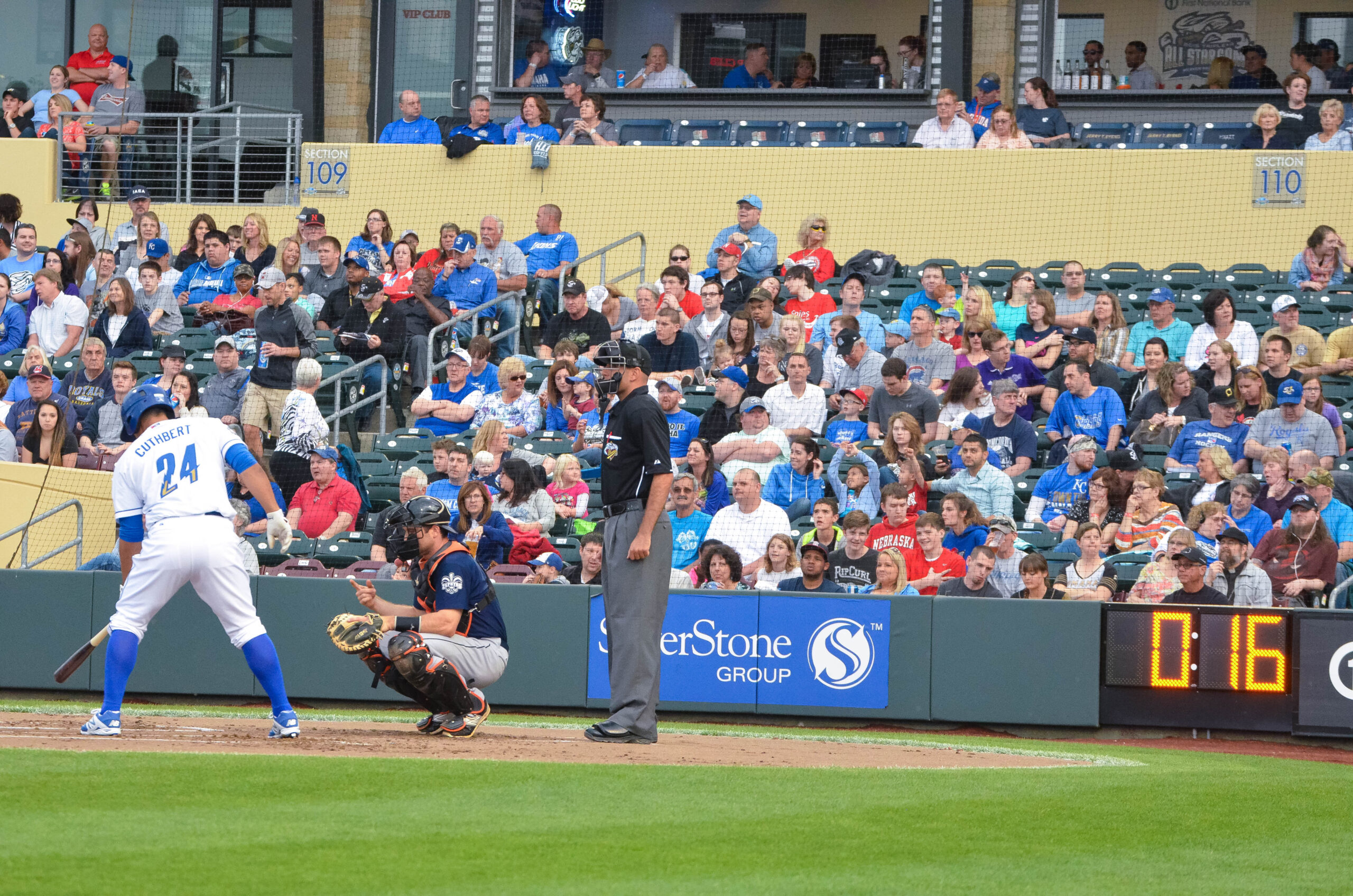
A pitch clock displayed at Nebraska’s Werner Park in 2015. (Photo by Minda Haas Kuhlmann via Flickr at https://flickr.com/photos/50264926@N02/16998109219)
Last Friday (June 24), I attended a Las Vegas Aviators baseball game at Las Vegas Ballpark, located in Summerlin. The Aviators are the AAA-affiliate of the Oakland Athletics, the Major League team that many Las Vegans feel will move to Sin City one day soon. It was over 100 degrees at the start of the game at 7:05 pm, but that is all right because this is a dry heat, which, I am told, is much better than its opposite, the sort of heat that brutalizes St. Louis. I am not convinced this is true. Maybe after a point, dry or not, heat is simply heat and only heat.
The game was governed by a fairly new invention of professional baseball, the pitch clock, which gives a certain number of seconds to throw the ball and the batter to set himself in the batter’s box. This is meant to shorten the length of games which, apparently, is one of the major sins of baseball, even in the eyes of the people who oversee the sport: the games are too long. Supposedly, shortening the length of games to under three hours will make baseball more attractive to younger fans, who somehow feel that the national pastime is too nineteenth-century. Having it run by a clock would seem to me to make it even more nineteenth-century (late rather than early), but who am I to say? One of my daughters, not a fan of the game, once suggested to me that instead of clocks, all baseball needed to do was reduce the length of the game from nine to seven innings and the number of strikes a batter is entitled to from three to two, eliminate bases on balls, and a batter could see no more than five pitches per at-bat. I agreed with her that that surely would reduce the length of a professional baseball game considerably but it would so change many other aspects of the game in ways we fans might not be quite ready for.
In any case, this game I attended was well over three hours, the Aviators losing to the Isotopes, 19-6. Of course, it is to be expected that a game where both teams collectively score 25 runs is bound to be over three hours long. It was just my luck to have attended an Aviators game earlier in the month that was also over three hours long. This time both teams together scored 22 runs. It seems my presence at the ballpark adversely affects the pitchers on both teams as the Aviators won this game 12-10.
Far be it from me to question Jeff Passan of ESPN, who wrote that the pitch clock has shaved twenty minutes off the length of games. I am sure he is right. And what kind of sample size do I have? Nonetheless, I do suspect that games might move more quickly if pitchers pitched better. Competence compresses time. If managers did not take so long changing pitchers at these minor league games, it would be much appreciated. At one point during the 25-run game, a pitching change took so long that all the defensive players left the field for a breather. I thought professional baseball was introducing a new custom of a mid-game siesta, rather like a European lunch break. But I must say that at the two games I attended, the players obeyed the clock and performed within its constraints very well. I was impressed. Such labor efficiency!
I like clocks. Horologes and chronometers so regularize reality. They make the trains and planes run on time, I think.
